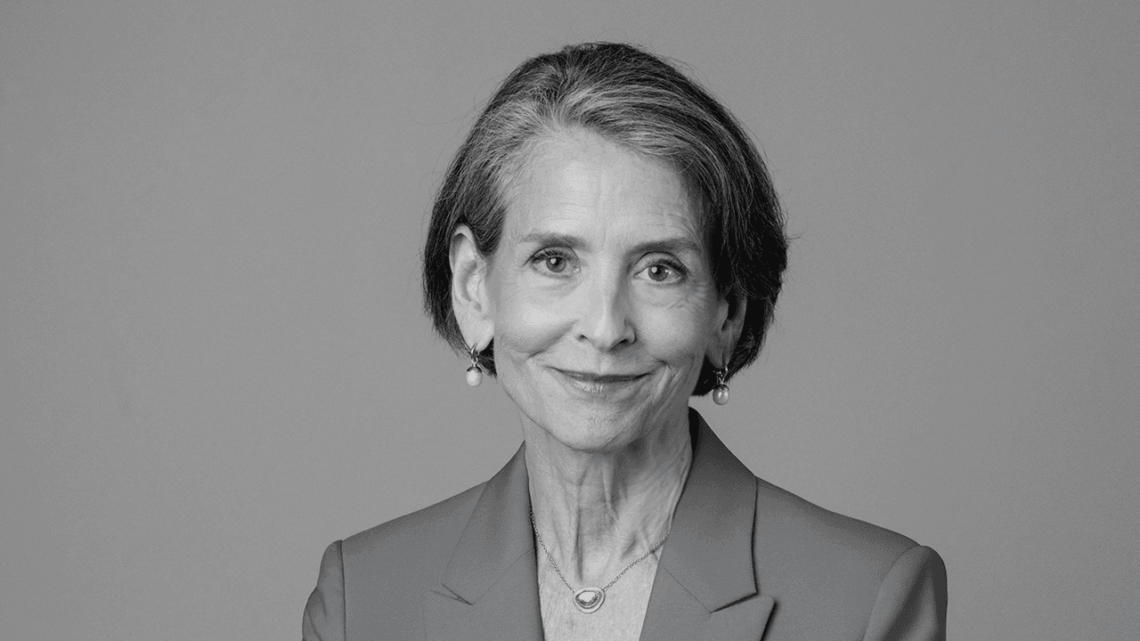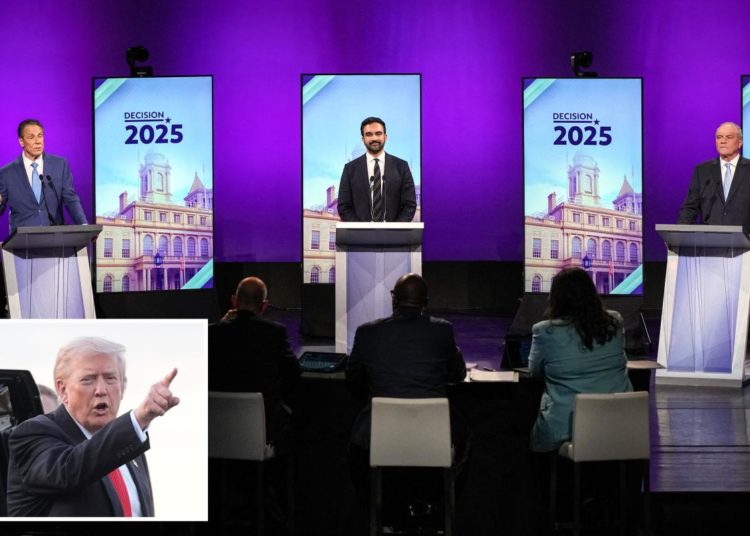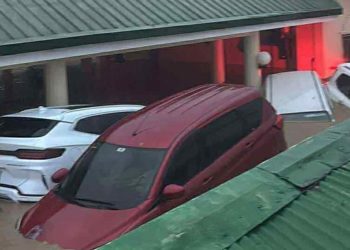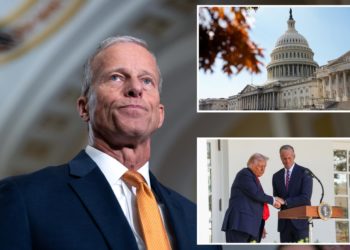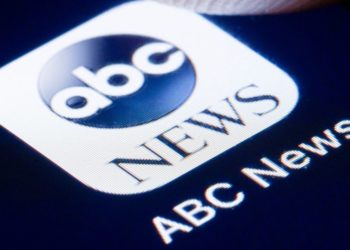“With each show, I learn so much from the artist because they’re thinking deeply. They’re looking carefully and closely. I really stand in awe of the artists. They’re all like rock stars to me,” says gallerist Yancey Richardson.
Known for exhibiting contemporary photography since opening her first gallery in SoHo in 1995, and now in Chelsea, Richardson began working with photography while taking part in the renowned Whitney Independent Study Program, curating shows with her cohort that included photographs by masters such as Edward Steichen, Carleton Watkins, and Bernd and Hilla Becher. Then, the fast pace of the gallery world came calling. “Ultimately, I decided I didn’t want to go the museum route. I was too impatient… to wait three years to do my one show.” After three decades as a dealer and nearly 290 shows at her eponymous gallery, each put on about every six weeks, Richardson remains enthusiastic about all aspects of her work, providing answers that show an extensive knowledge of her artists’ practices.
The gallery’s roster includes photographers such as Mitch Epstein and the late Larry Sultan, whose color photos often fall within the lineage of the New Topographics, alongside those who have expanded into other media. David Alekhuogie and Mickalene Thomas have incorporated existing printed matter—Walker Evans photographs and images of Black women from Jet magazine, respectively—into sculptures, paintings, and collages. As Richardson sees it, many of her artists are “pushing the medium beyond what a lot of people think of as photography. They’re experimenting with photography as a tool.” Her interest in a wide range of contemporary practices is anchored in a deep belief in the work that every artist on her roster is creating. “People ask, ‘So what are you interested in for the gallery?’ And I say, ‘Work that blows me away!’” Richardson explains, “I don’t think artists can make work for the market. There’s a reason why it’s called a practice. Trends are like a tide: they come and go. But in the meantime, the good work—compelling, smart, and beautifully made—prevails.”
In advance of Richardson’s upcoming summer exhibition, opening July 16, in honor of the gallery’s 30th anniversary, Vanity Fair recently spoke with Richardson about opening her first show with the visionary photographer Sebastião Salgado, working with artists long term, and the great literature that has been sustaining her lately.
This interview has been edited and condensed for clarity.
Vanity Fair: Would you say that a huge part of [a gallerist’s job] is connecting with your clients or collectors or institutions, and then being able to share the story behind your artists’ projects?
Yancey Richardson: It does involve a certain amount of storytelling. There’s no exact narrative for talking about people’s work—what they’re trying to capture out in the world, or what they’re constructing in the studio. A certain number of the artists that I represent are very process-oriented. I do have some straight photography, but a number of my artists, like Mickalene Thomas or Laura Letinsky, work in multiple disciplines, painting or drawing, and making sculptures and films. Photography is just one aspect of their practice, but it’s my way in. I’m definitely seen as a gallery that works with contemporary artists that range from emerging to very established, but I’ve never defined the gallery’s program in any particularly strict way. There are no rules. It just needs to be good work.
Do you have any specific subjects or themes in mind when you’re looking at artists’ work for the gallery? What is it like working with them throughout their careers?
There’s a really wide range in the work we show. I think the artists just have to make work every day. Some artists work three to five years on a project. They’re doing a lot of research. Sometimes they don’t know in advance where they’re really going with the work. They have to see where it goes. It’s almost like somebody who’s really good in the kitchen, like they don’t know exactly how they’re going to season it until they taste it. A lot of times, the artists are interested in something, so they start looking and photographing, or making work along a certain line, and then it just builds and builds and builds.
The artists are our clients. They’re who we take care of. They’re who we work for. And we are also their advocates. We are their safe zone. They’re sharing work with us as some of the first people to see it, and they need feedback. The relationships can be very close and supportive.
I’m curious now to hear about your summer group show, in honor of the gallery’s 30th anniversary. You’ll be pairing artists from your roster and having them select work from each other’s archives.
Yeah! Well, the artists are loving this. So what we’ve asked the artists to do is to pick another artist in the gallery with whose work they wanted to engage and to curate them into the summer show. So it’s a co-curation by all the artists that I’ve exhibited at the gallery. Mickalene [Thomas] is a curator, but most of them are used to being curated. So they’re having a great time with this peer-to-peer relationship and engagement. For instance, Zanele Muholi selected Tseng Kwong Chi. They both do a kind of performative self-portraiture. So there’s a recognition of what that other artist is doing.
What’s exciting about the show overall is the spirit of influence and mentorship. Has there been anyone with whom you’ve had a mentorship or professional partnership?
That’s a really important question. I really enjoy my relationships with other gallerists. Sean Kelly has been a wonderful supporter of the gallery. He also loves photography. I would say that Sikkema Jenkins and I have had a close relationship. We share an artist, which is an unusual situation, but I’ve really enjoyed the collaboration. It makes the whole experience richer.
There have been a couple of collectors that were interesting mentors. Certain collectors who are very passionate about the medium teach you as much as you teach them. They have inquisitive minds and great eyes. I really value those relationships too.
What was it like to find your first gallery space and think about your first show there?
In the ’90s, when I decided to open a gallery, I was very close to some other dealers. When one of them told me they were going to move their gallery, I grabbed their space. That was my first gallery in SoHo at 560 Broadway, which was, in a way, a historic gallery building. Jack Shaiman, David Nolan, and Max Protetch were there, so that was a great building to be in. My first show, by the way, was with Sebastião Salgado, who just died.
I’m so sorry to hear that he passed.
It was such a shock because he’s been part of my program since the beginning. He was an extraordinary person. I used to call him a man with a mission. He was already a big name when I opened the gallery, so for him to agree to be my first show and to be represented by me was a brave vote of confidence.
Gallerists aren’t necessarily viewed as creatives themselves, but I find that being a photo editor is still a very rich and creative position, even though I’m not necessarily producing something myself. Do you look to other art besides photography for inspiration?
I would say yes to all of that. I look at work all the time, and I’m a big fiction reader. I just finished a Philip Roth book called The Human Stain. I like to read really good literature. Books inform the way I look at things. I was trained as an art historian, rather than a photographer, so I’m often drawn to work where I can see the references to art historical works. It’s like listening to music and noting the references in it to other music. I look at everything, really: ceramics, painting, drawing, sculpture, textiles. I just have this specialized knowledge in terms of photo-based work. I’ll go see “Sargent and Paris” at The Met on Monday. My husband says, “It’s your day off. Don’t you want to take a break?” And I say, “This is what I love to do.”
“Celebrating 30 Years” is on view at Yancey Richardson Gallery in New York from July 16 to August 15.
More Great Stories From Vanity Fair
-
See All the 2025 Emmy Nominations
-
The Former Soccer Player Who Spent $10 Million on the Original Birkin
-
What’s the MAGA-Epstein Drama All About?
-
Inside a Royal “Rapprochement” Meeting
-
Trump’s Nobel Prize Gripes, Cataloged
-
Superman’s Culture War
-
The Secret Lives of Brando, Pacino, Dolly Parton, and More
-
How Donald Trump’s Governing Style Mimics the Mob
-
Everyone Wants a Piece of Pedro Pascal
-
The 11 Best Movies of 2025, So Far
-
From the Archive: The Women of Palm Beach
The post Yancey Richardson on the “No Rules” Philosophy Behind Her Gallery appeared first on Vanity Fair.
